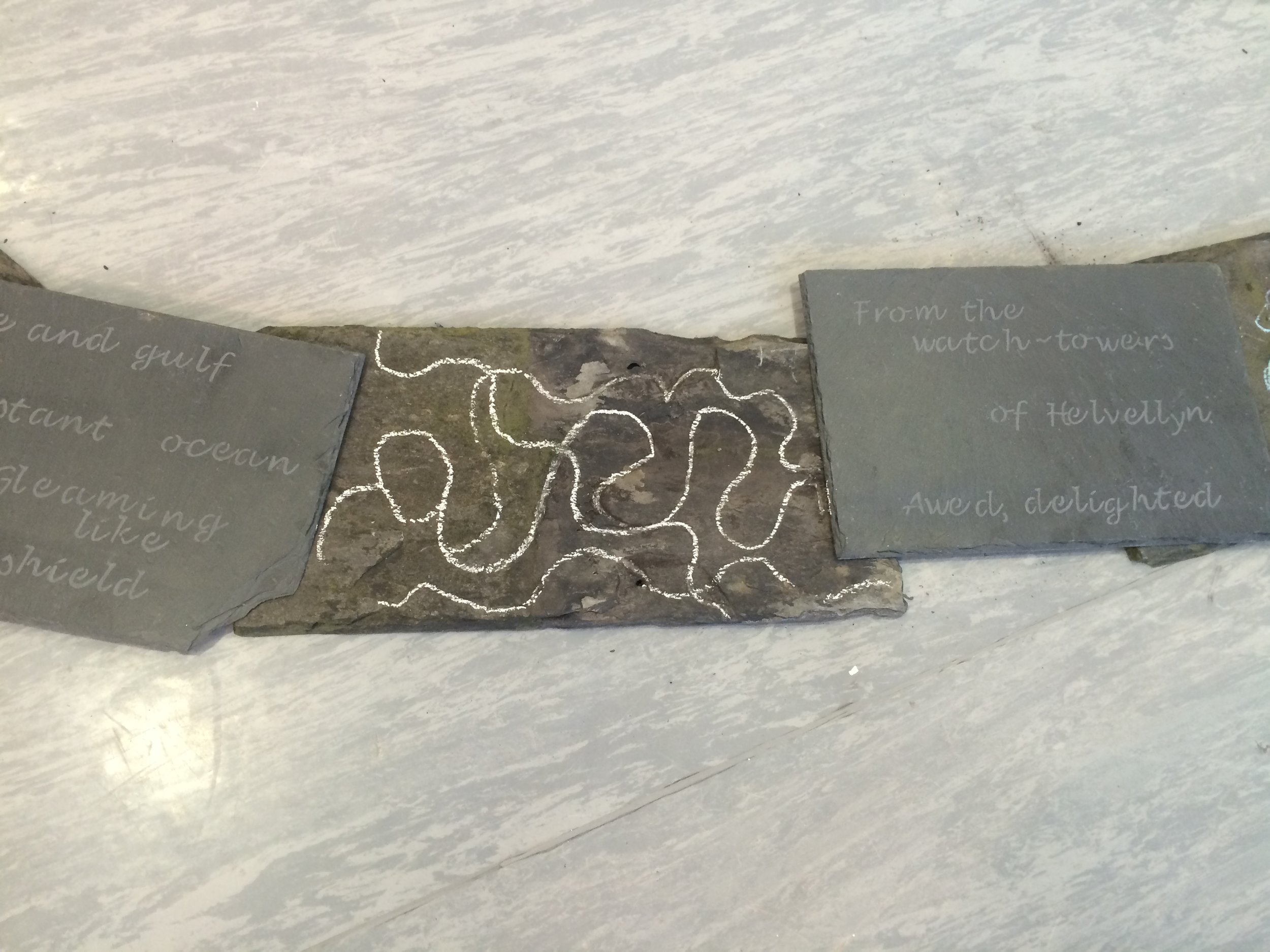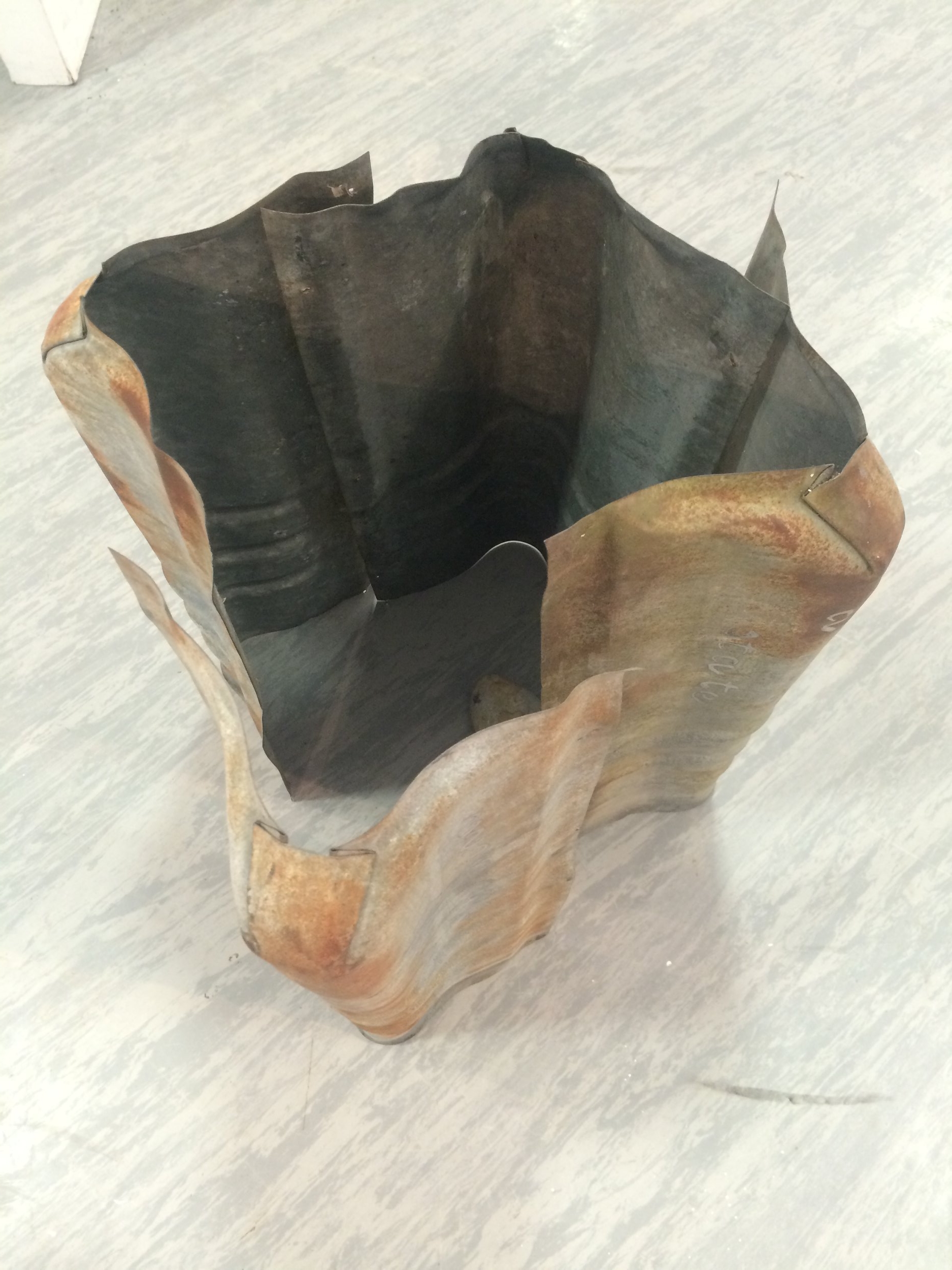The Design Centre and W. A. L. K. Research Centre at University of Sunderland hosted my solo interactive installation of the 3D Poetic Canvas based on the poems of Wordsworth, Whitman, Machado and Snyder and my walks in their inspirational landscapes.
I was artist and curator for this solo multi-media show with the guidance of Prof. Manny Ling and Prof. Mike Collier.
The four walking poets were presented with the sacred number 33 to allow for a walking experience on par with the Buddhist-Hindu traditional mandala that potentially focuses the mind and body in harmony with its environment.
Personally I wanted to allow for the emergence of a creative space via walking combined with fragments of Nature to inspire the audience.
The Sacred number 33 is derived from 8 directions (compass) + 3 dimensions (sky, earth, inner core) X 3 (time) = 33. Past, present and future merge into One. In context the 8 landscape palette colours X 4 poets (32) +1 (artist) = 33.
Several challenges were presented with the space and heritage material such as a static centre wall, treatment of delicate 100 year-old tiles, and the 32 painted landscape banners in a low ceiling. I opted for a Tibetan flag effect and created special hangers for the tiles to maintain integrity for the show, while positioning the centre wall on a diagonal to open the space for a circular path.
I added my re-play poetry and painted palettes based on my walks in the Lakes District of England (Mt. Helvellyn), Mt. Tamalpais near San Francisco, Hempstead Plains on Long Island, New York, and Guadarrama Mountains in Spain.
The banners were hand-stitched with cotton thread and/or glued with canvas to adhere to the concept of bookbinding.
This year marks the 100th anniversary of Machado’s poetic stanza, "Caminante no hay camino" first published in Campos de Castilla, second edition 1917. This is the first exhibit in a series across two continents: Europe and the Americas.
The name “Touch and Be Touched” is derived from one of my older poems about the relationship between the drummer and the drum in African music.
This exhibit displays the phenomenological aspect of my research in tactile perception and how we understand the world outside ourselves via “touch.”
In addition, it is rare to touch a roof tile (on the floor) considering its placement high above our reach in real life, which focuses our attention on its visual perception.
The public was invited to participate in touching various parts of the exhibit as an added element to the visual perception. Tables provided access to the physically challenged and the floor replicated a sandbox.
Furthermore, the audience could walk around the space and create a personalized 3D poetic canvas within the tactile exhibit. Various combinations arose with literary context and forms that transformed the installation each day.
Everything was touchable with a core hanging section which remained stable to help balance out the changes. I was able to witness some of the public response from art and design students who enjoyed the playful aspect of forms. Surprisingly the Spanish and English poetic fragments at times matched noting the “blue” sky. I believe this was pure coincidence but at the same time quite beautifully displayed.
The exhibit ended up with its own path on a “walk” into our collective tactile memory. The impermanence of each 3D poetic canvas was part of the Buddhist philosophy to enjoy the present.



























Thanks to the collaboration of the technicians in the Art, Design and Media department I was able to further advance my PhD research in museum presentation.
Additionally my student colleagues (including Jo and Angela) were encouraging and special thanks to Richie and Zack for their expertise in metal and photography respectively.





































































